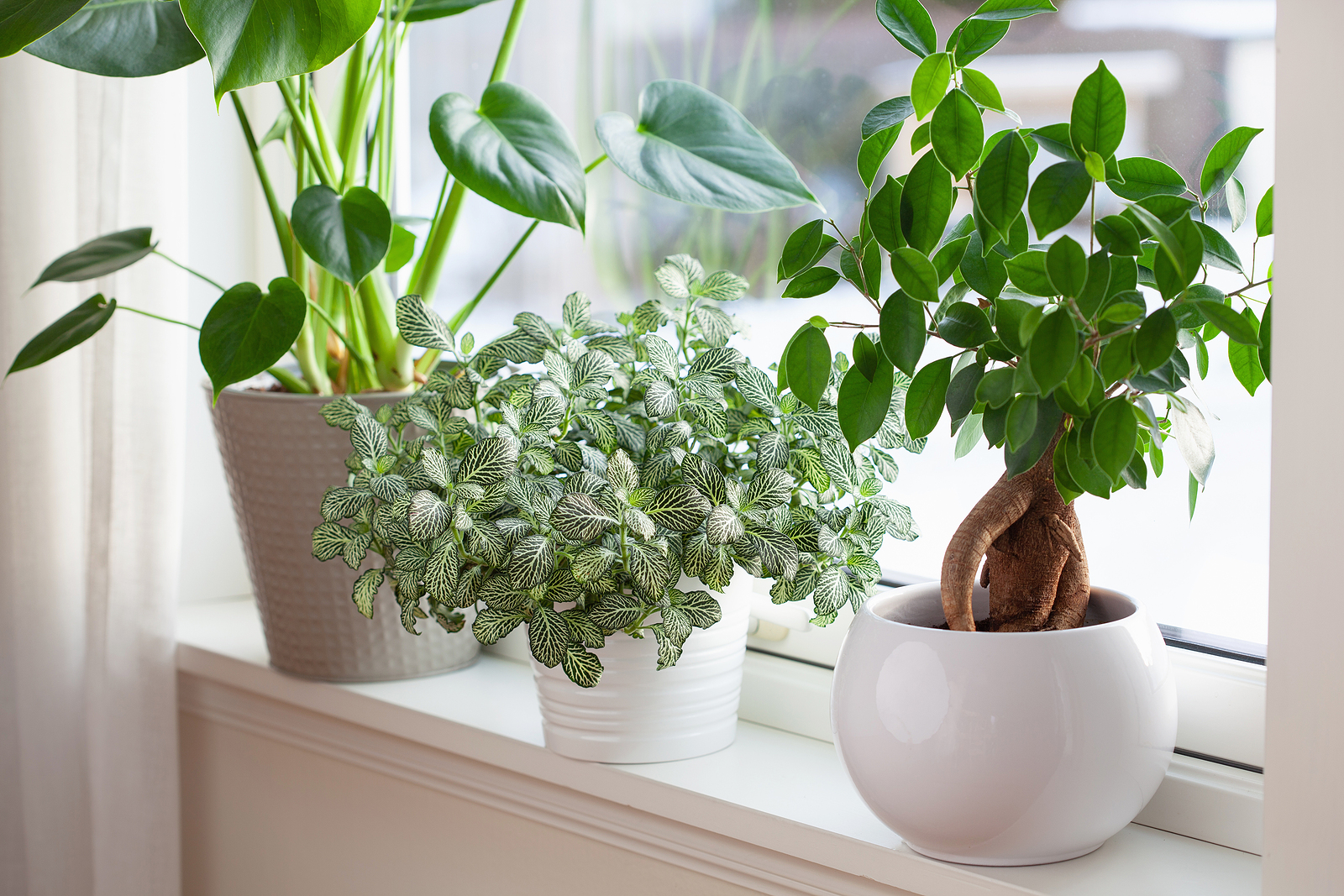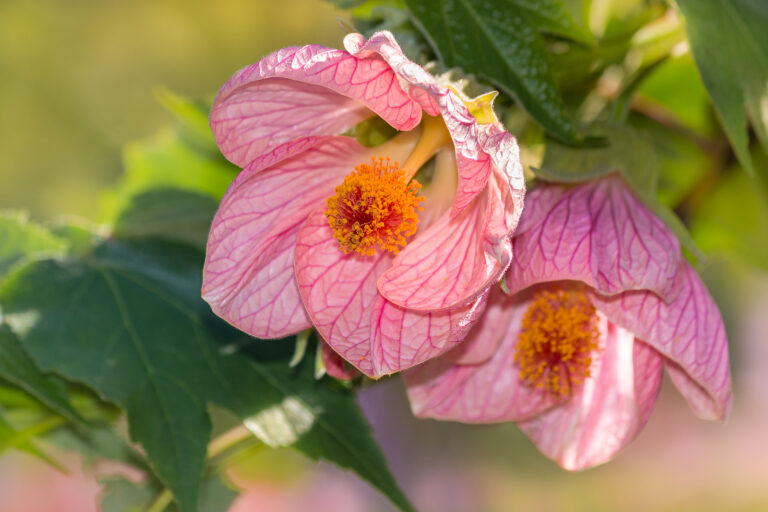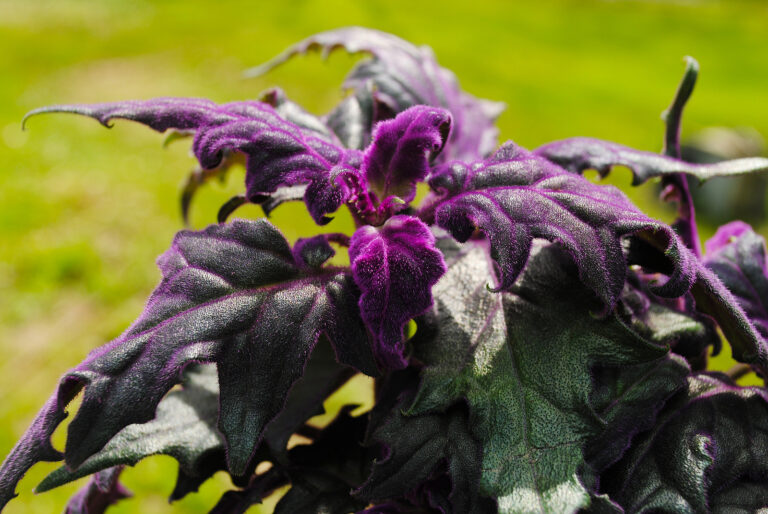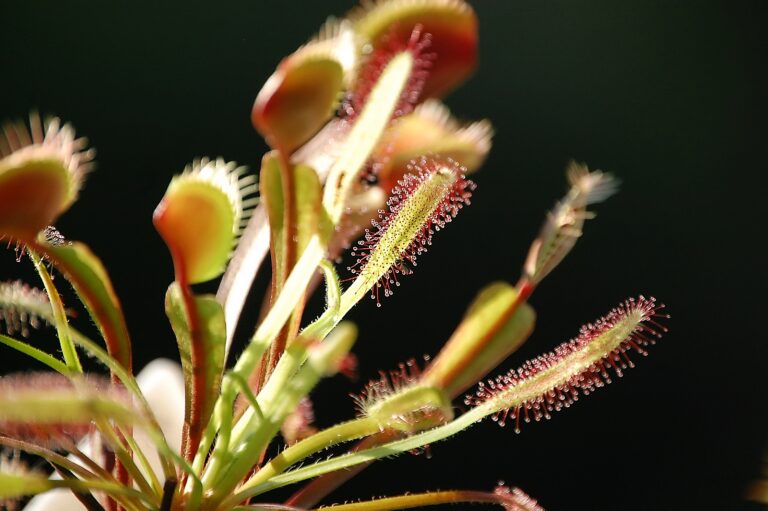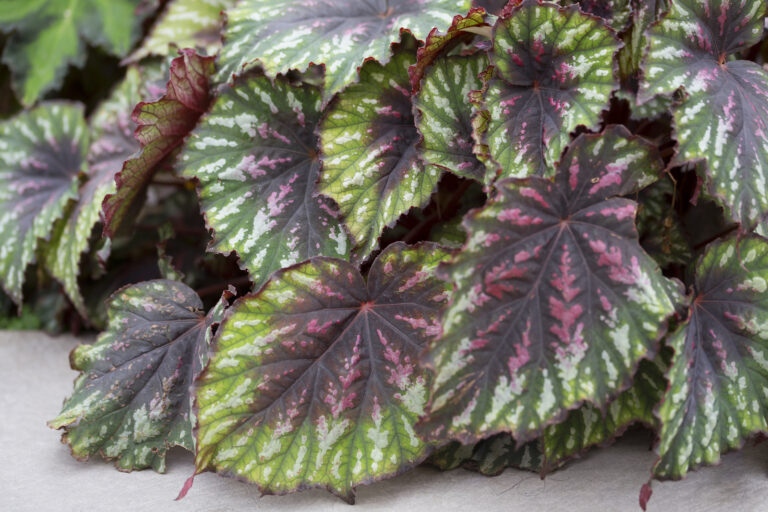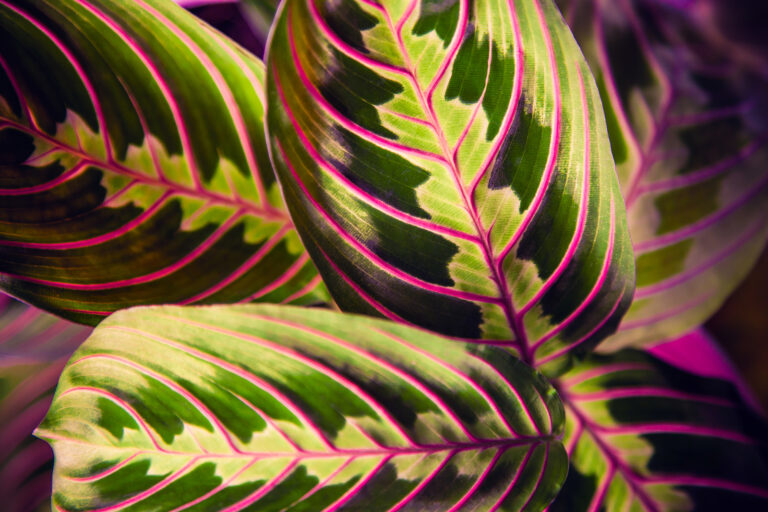Houseplant Light Needs
Matching a plant to the light in your home or office is very important.
Plants need the right light to thrive and grow; the amount of light needed can vary from one plant to the next.
Plants use light to make food during the process of photosynthesis. During photosynthesis, the green leaves make complex sugars which feed the plant
Generally, flowering and variegated plants need more light than plants with simply green foliage.
Place plants where they will get the light they need. If natural light is not available, you will need to provide artificial light.
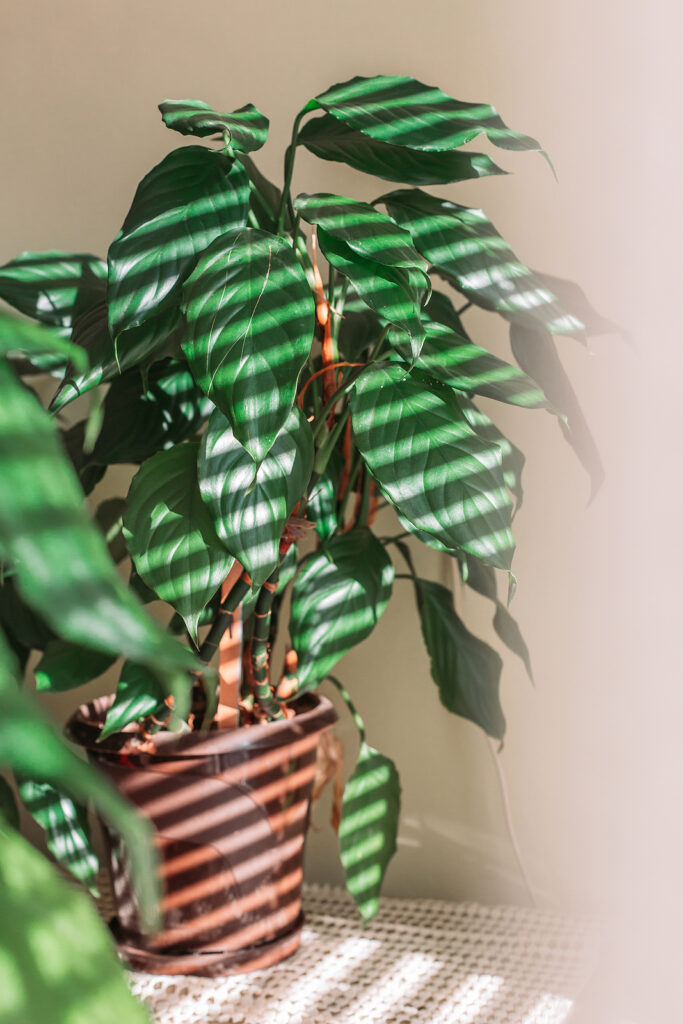
Types of light
Light for houseplants can be classified by intensity, duration, and distance from windows. Here are types of indoor light from full sun to low light:
- Full sun: within 2 feet (0.6m) of a south-facing window; at least 5 hours of direct sun.
- Some sun: in east and west windows or within 2 feet of a southern exposure; less than 5 hours of full sun.
- Bright light: within 5 feet (1.5m) of any window that receives some direct sun.
- Medium-light: 5 to 8 feet (1.5-2.4m) away from a sunny window or directly in a north-facing window.
- Low light: areas far away from bright windows such as corners of rooms, hallways, entryways, and bookshelves.
Plants for each light types
Using the light classification directly above, here are selected houseplants and their light needs:
Full sun houseplants
- Bulbs: Amaryllis
- Cacti: Aloe vera, most cacti, crown of thorns, hens and chicks, jade plant.
- Flowering plants: Chrysanthemum, hardy mum, gardenia, kalanchoe.
- Holiday: Poinsettia
Some sun houseplants
- Bulbs: Easter lily
- Ferns: Asparagus fern
- Flowering plants: Cape primrose, gloxinia, zebra plant
- Foliage plants: Norfolk island pine
- Palms: Ponytail plan, elephant-foot palm
Bright light houseplants
- Bromeliad: All varieties
- Bulbs: Asiatic lily hybrids, daffodil, freesia, hyacinth, tulip
- Cactus: All varieties
- Ferns: Staghorn fern
- Flowering plants: African violet, azalea, Rex begonia, Rieger begonia, crossandra, cyclamen, dahlia, flame violet, flamingo plant, fuchsia, Gerbera daisy, hibiscus, lipstick plant, miniature rose.
- Foliage plants: Alocasia, false aralia, Japanese aralia, Ming aralia, bird of paradise, chenille plant, compact dracaena, gold dust dracaena, Janet Craig dracaena, Malaysian dracaena, striped dracaena, tricolored dracaena, dragon tree, weeping fig ficus, goldfish plant, big-leaf philodendron, snake plant, stephanotis, yucca
- Holiday plants: Christmas cactus
- Ivies: Algerian ivy, English ivy, variegated English ivy
- Orchids: cattleya
- Palms: Areca palm, bamboo palm, Chinese fan palm, fishtail palm, Neanthe Bella palm, parlor palm
Medium light houseplants
- Ferns: Bird’s nest fern, Boston fern, Dallas fern, fluffy ruffles fern, Kimberly queen fern
- Flowering plants: Cineraria, Persian violet, English primrose
- Foliage plants: Calathea, Chinese evergreen, croton, ribbon plant dracaena, fiddle-leaf fig ficus, lyrata ficus, Hawaiian ti, nerve plant, philodendron, piggy-back plant, pilea, polka-dot plant, Schefflera, spider plant, Swedish ivy, wandering Jew
- Ivies: Grape ivy
- Palms: Lady palm
Low light houseplants
- Ferns: Button fern
- Flowering plants: Hydrangea, fairy primrose, shamrock plant
- Foliage plant: Cast-iron plant, Chinese Evergreen ‘Silver Queen’, Dieffenbachia dumb cane, corn plant dracaena, white-striped dracaena, rubber plant ficus, burgundy ficus, Nephthytis arrowhead vine, peace lily, pothos, prayer plant, satin pothos, screw pine
- Ivies: Creeping fig, Oakleaf ivy
- Palms: Kentia palm, sentry palm, pygmy date palm, sago palm
Artificial light for houseplants
Plants can grow under artificial light that provides the same intensity and quality of light as sunlight.
Here are important considerations if you use artificial light to grow houseplants:
- All light consists of waves that appear as a spectrum of colors when passed through a prism. Photosynthesis—the process by which plants manufacture their food—uses mainly red and blue waves found at opposite ends of the spectrum.
- Fluorescent bulbs provide mostly blue and a little red light.
- Incandescent bulbs provide mostly red and a little blue light.
- To give plants a balanced combination of red and blue light, indoor lights should combine two types of artificial light—one watt of incandescence for every three watts of fluorescence.
- Incandescent bulbs give off heat that can burn plant foliage; keep these bulbs at least 4 feet (1.2m) away from the plant. Fluorescent light is generally preferable; it emits less heat and uses less energy.
- Use a fluorescent light fixture with a white or foil reflector to direct light onto the plants. The strongest light shines from the center of the tube. Several fluorescent tubes will be needed to support more than one plant.
- As a standard, all plants require 15 to 20 watts of light for every square foot of their growing space. (Estimate the growing space by calculating the volume of space a plant occupies.)
- Grow lights—tubes or bulbs—simulate actual sunlight. Grow lights stimulate plants to bloom, produce fruit, and set seeds.
- Adjust the height of any light to allow for plant growth. Start with tubes placed 6 to 12 inches (15-30cm) above the foliage. Fluorescent tubes and grow lights will not harm plants; they can be moved closer to leaves if needed.
- If foliage bunches together unnaturally, plants are receiving too much light. If plants become leggy, they need more light.
- Most foliage plants need 10 to 12 hours of daily light; flowering plants need 16 hours of light. Plants also need darkness for rest. Keep a regular schedule of light and dark.
Also of interest:

